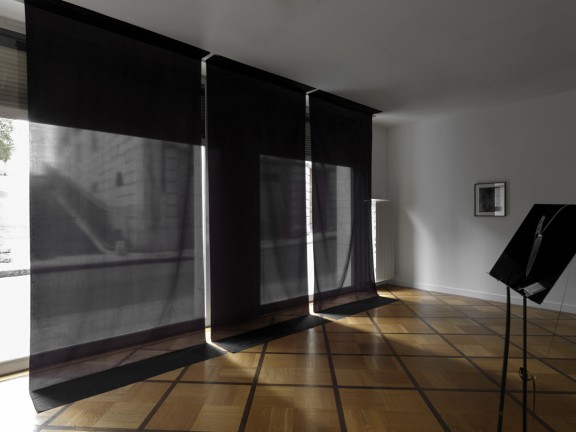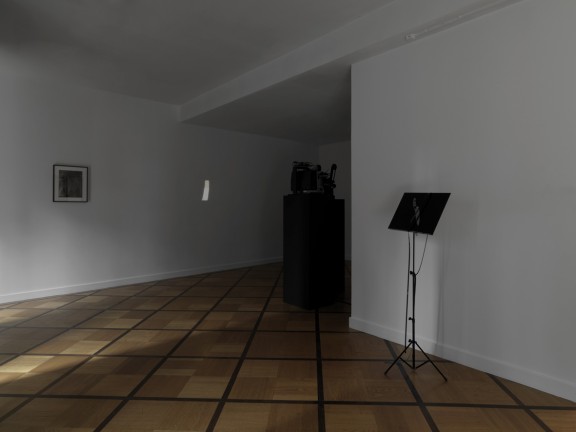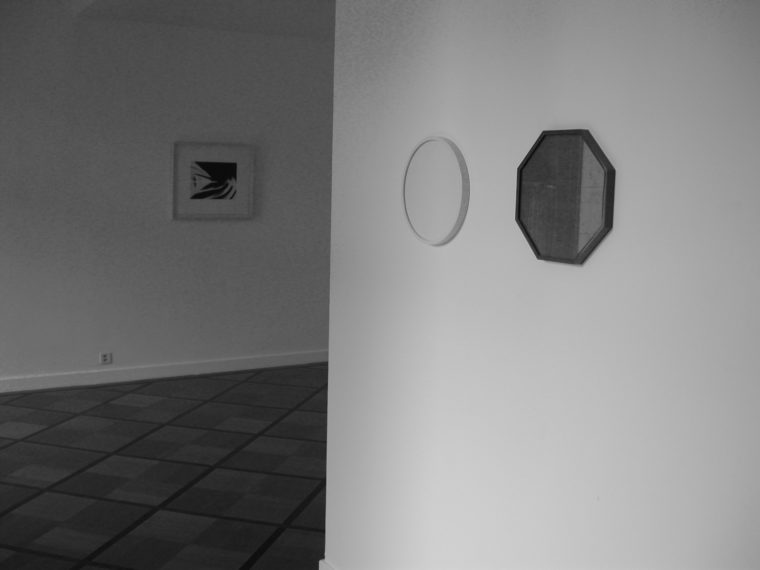Susanne M. Winterling
They Called Each Other Horses
April 23 – June 26, 2010
Opening on April 22, 2010, 6pm
Susanne M. Winterling likes revisiting different figures of Art History, architects or intellectuals of the 20th century, mostly from its beginning. She admires and is inspired by the work of artists such as Berenice Abbott, Eileen Gray, Edward Krasinski, Le Corbusier or Annemarie Schwarzenbach, artistic fiction-figures from another world, a world that witnessed the birth of modernity.
As Mark Prince states in his Frieze article [n° 126, October 2009, …of Mice and Blood, (for E.K.), review of the Berlin exhibition at the gallery Lüttgenmeijer, where Susanne M. Winterling pays tribute to the Polish artist Edward Krasinski (1925-2004) with a display of objects and an environment inspired by a series of photographies taken in his atelier, preserved in its last state by the Warsaw Foksal Gallery (that Edward Krasinski cofounded in 1966)] : « Where the installation is more than the sum of its allusions, it manages to translate the irreducible particularities of another artist’s life and work into Winterling’s own language, like a dreamy adolescent who absorbs the image of a pop star into the private universe of her bedroom. »
The photographies, films, objects or installations of Winterling are filled with a sense of nostalgia for the freedom, the exaltation and the anti-conformism of the Avant-Garde years. Though the reappropriation of these ideal figures could fall into fetishization, it in fact produces a temporal stretch and a mirror-effect between past and present, allowing us to inquire as to the attitudes and status of artists today. The German artist Joseph Strau approaches the question of identification to emblematic artist-figures in his article on Susanne M. Winterling (published in Camera Austria, n°105, 2009): « … her specific interest in the examples of historical artists, attempts to create an identification, both for herself and for the observers, attempts to fade her own situation as an artist into the situation of other artists. In performing these cross-fades of identity she is particularly interested in investigating how these artists were able to come to terms with their lives despite difficult social circumstances and identity crises in various social spheres. »
For her project with the Centre d’édition contemporaine, Susanne M. Winterling is going to produce and show several pieces, forming a whole, whose principal reference and source is the Avant-Garde group Pool. Between the end of the 1920s and the beginning of the 1930s, the American poetess H.D. (Hilda Doolittle), the British writer Bryher (Winifred Ellerman) and Kenneth Macpherson, a Scottish draughtsman and cinema-lover, were gathered in this group. They were producers and editors of experimental films (Pool) and founded together a critical and literary review for Art and Cinema of their time, Close-Up, active between 1927 and 1933. They established headquarters in La Tour-de-Peilz (VD), where Bryher and Macpherson built one of the most beautiful modernist houses of the Riviera vaudoise, the Villa Kenwin (1930-1931). This house had become for this small libertarian community a sort of engine for life, a machine to produce an intense and free intellectual and artistic activity. Their edition- and production house for cinema, Pool, their review, Close-Up, and the best known film they shot together, Borderline (1930), are on an experimental ground close to surrealism and to the taste of the era for parapsychological phenomena, visionary experiences and magic. At the beginning of the 20th century, these interests strongly relate to the first psychoanalitic practices where the cinematographic image still has the diaphanous, magical mystery of the projection and could reveal mental projections, could be a psychoanalitic material. As François Bovier puts it concerning the group Pool and especially H.D. who had a great influence on its orientations, – H.D. took part in « Imagism », an Anglo-American movement in poetry based in London that started around 1912, and she began in 1933 a psychoanalysis with Sigmund Freud – : « le cinéma a momentanément servi de relais entre l’expérimentation poétique et la démarche psychanalytique, celui-là étant en retour investi par les enjeux afférents à ces deux pratiques. Le cinéma, dès lors qu’il permet de réactiver des investigations qui portent sur l’image poétique et sur la libre association de pensée, est assimilé à une expérience visionnaire (car il s’agit là, somme toute, d’une affaire de voyants). Le groupe Pool, à travers son engagement dans la pratique filmique et la spéculation théorique, a redéfini en termes cinématiques les enjeux et le programme d’une certaine avant-garde littéraire, en empruntant le cheminement de l’interrogation psychanalytique. »
The installation of Susanne M. Winterling will involve transforming slightly the windows of our venue, a transformation that contextualizes a series of recent works : 16mm films, photomontage and assemblage of objects, inspired by the group Pool, its interest for experimental cinema, its editorial engagement and its lifestyle.



